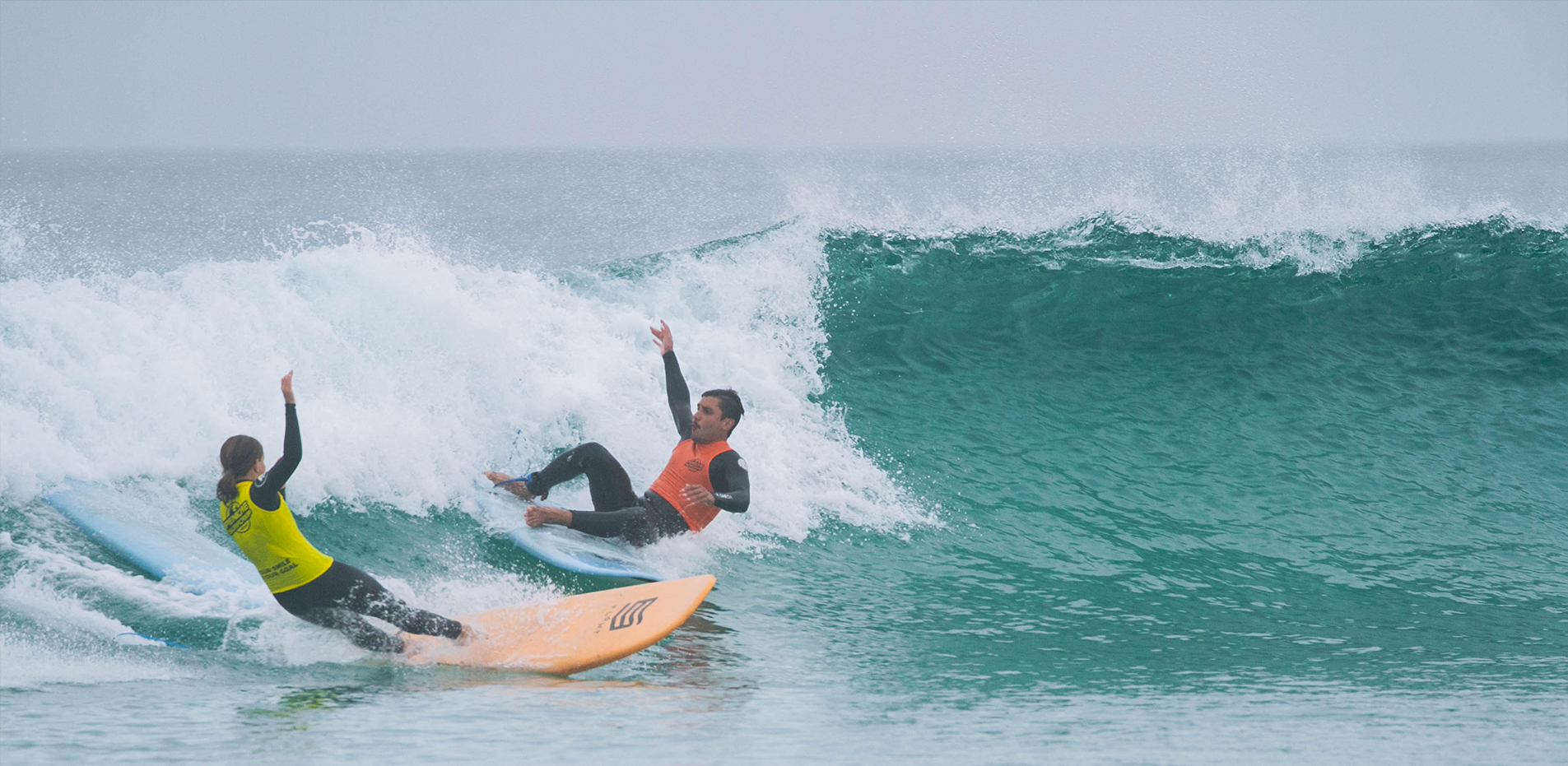Surfing, like all water sports, has the obvious inherent danger of drowning, however this danger can be higher than in other water sports. When surfing, a surfer should not assume that they will always have their board to keep them buoyant – the leg rope could break or fall off some other way, and the board could become separated from the surfer by unpredictable wave crashes.
A surfer needs to be confident that he/she can safely swim back to the beach unaided without his/her board. However, even if a surfer is confident in their swimming ability, there is always the possibility that the surfer could become hurt or even unconscious through a head collision with another surfer, their own board, or rocks, reefs, or hard sand on the bottom of the water, in which case they won’t be able to swim at all. This is why it’s also important to surf with others, or at least have someone watching out for you from the beach.
Surf rage can be a problem in places where there are limited surfing breaks and many surfers trying to ride the breaks. This can be especially true if some unspoken agreement between the surfers about whose turn it is to take the break is not understood by one or more surfers, which can often be the case due to the informal and unspoken nature of this agreement.
Lateral Current
Since most waves break at an angle to the shoreline, they push water sideways, forming a current that moves parallel to the beach. This is called a lateral current. (side or longshore current). Generally, the larger the surf is, the stronger the lateral current will be. Lateral currents can push swimmers or divers downcoast into rocks and other dangerous obstacles. When lateral currents meet sandbars, large rocks, channels, or fixed obstacles like piers or jetties, the flow of water is diverted seaward, forming a rip current.
Rip Current
A rip current is a swift current of water which flows from shore out to sea. It is caused by an excess of water accumulating inside the surfline from the incoming wave action. Seeking its own natural level, the water flows back out to sea through the lowest point in the bottom. A strong current is created. A rip current can usually be identified by brownish, choppy water, which appears to be pulling out to sea. A rip current usually dissipates out beyond the surf zone, ending in a “mushroom shape.” Rip currents are very dangerous and can pull people out to sea. If you get caught in a “rip”, don’t panic. Swim parallel to shore until you are out of the rip current, then swim safely into shore.
Rocks along the coastline are often covered with moss and algae and are very slippery. If the rocks are mossy or are wet from waves, that’s a sure sign to exercise caution.
- Always closely supervise children and non-swimmers near the water
- Never turn your back to the ocean
- Be aware of constantly changing ocean conditions
- Observe all water safety warning signs
- Don’t drink alcohol
- Respect the power of the sea and be careful
